Tomatoes are one of the most beloved ingredients in kitchens around the world. They’re versatile, vibrant, and packed with flavor. But among the many varieties that fill grocery shelves, one group stands apart—heirloom tomatoes.
These aren’t just tomatoes, they’re edible heirlooms, passed down through generations, each with a story, and a flavor profile that defies the bland uniformity of mass-produced hybrids.
In this article, we’ll explore what heirloom tomatoes are, why they matter, and how to prepare them in ways that celebrate their uniqueness. Whether you’re a home cook, a food stylist, or a culinary storyteller, heirlooms offer a canvas of color and taste that’s as inspiring as it is delicious.
What Are Heirloom Tomatoes?
Table of Contents
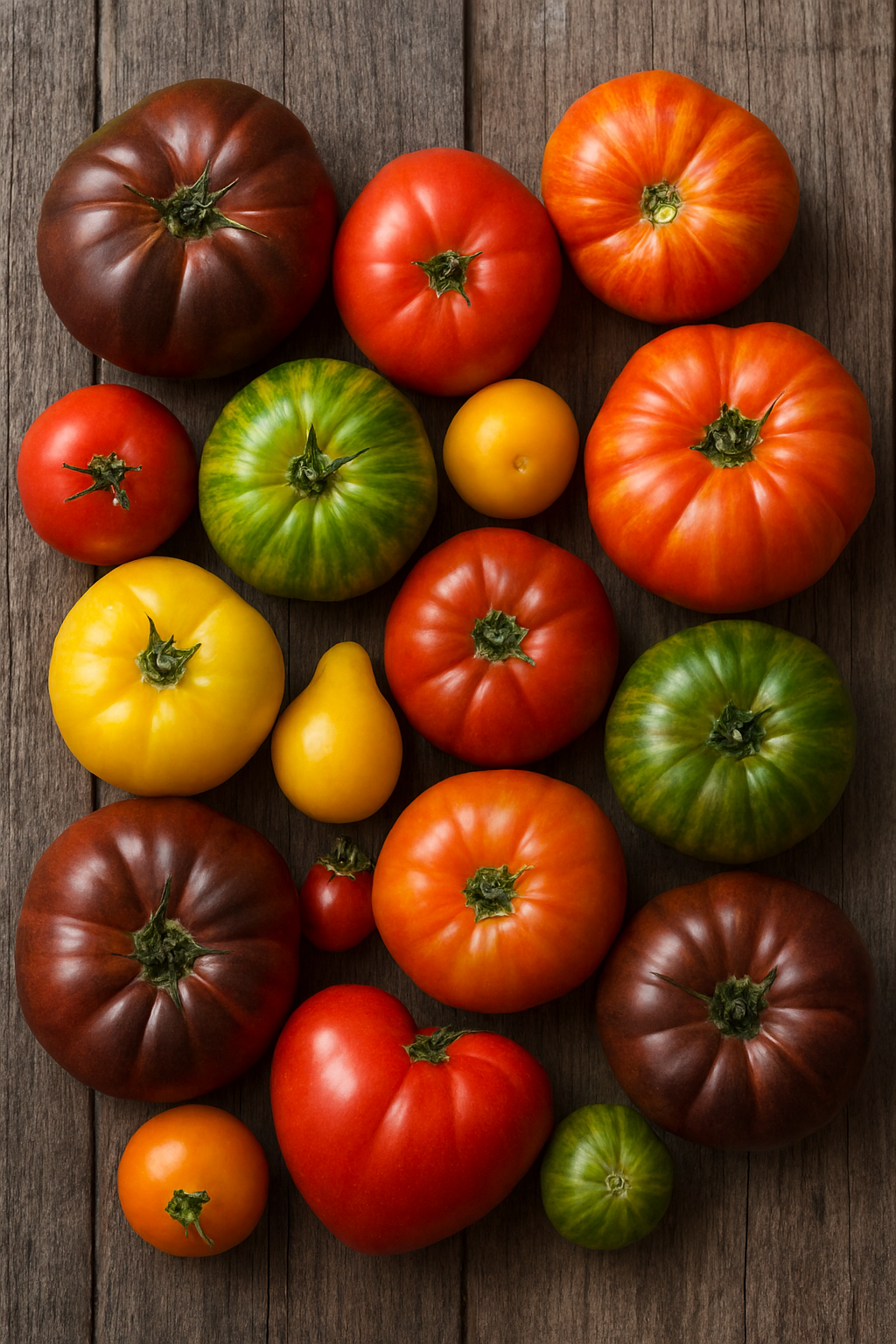
Heirloom tomatoes are open-pollinated varieties that have been cultivated for decades—often over 50 years—and passed down through families or communities. Unlike commercial hybrids bred for shelf life and transportability, heirlooms are grown for flavor, texture, and visual appeal.
Key Characteristics of Heirloom Tomatoes
• They are not genetically modified or crossbred; they reproduce true to type from seed.
• They come in a wide range of colors—deep purple, golden yellow, striped green, fiery orange, and more.
• Their shapes vary from ribbed and ruffled to perfectly round or heart-shaped.
• They offer complex flavor profiles—sweet, tangy, smoky, or earthy.
• Their skins are thin and delicate, making them prone to bruising and best enjoyed fresh.
• They often have irregular shapes and sizes, which adds to their charm and authenticity.
• Their seeds can be saved and replanted, preserving the variety for future generations.
Popular Varieties of Heirloom Tomatoes
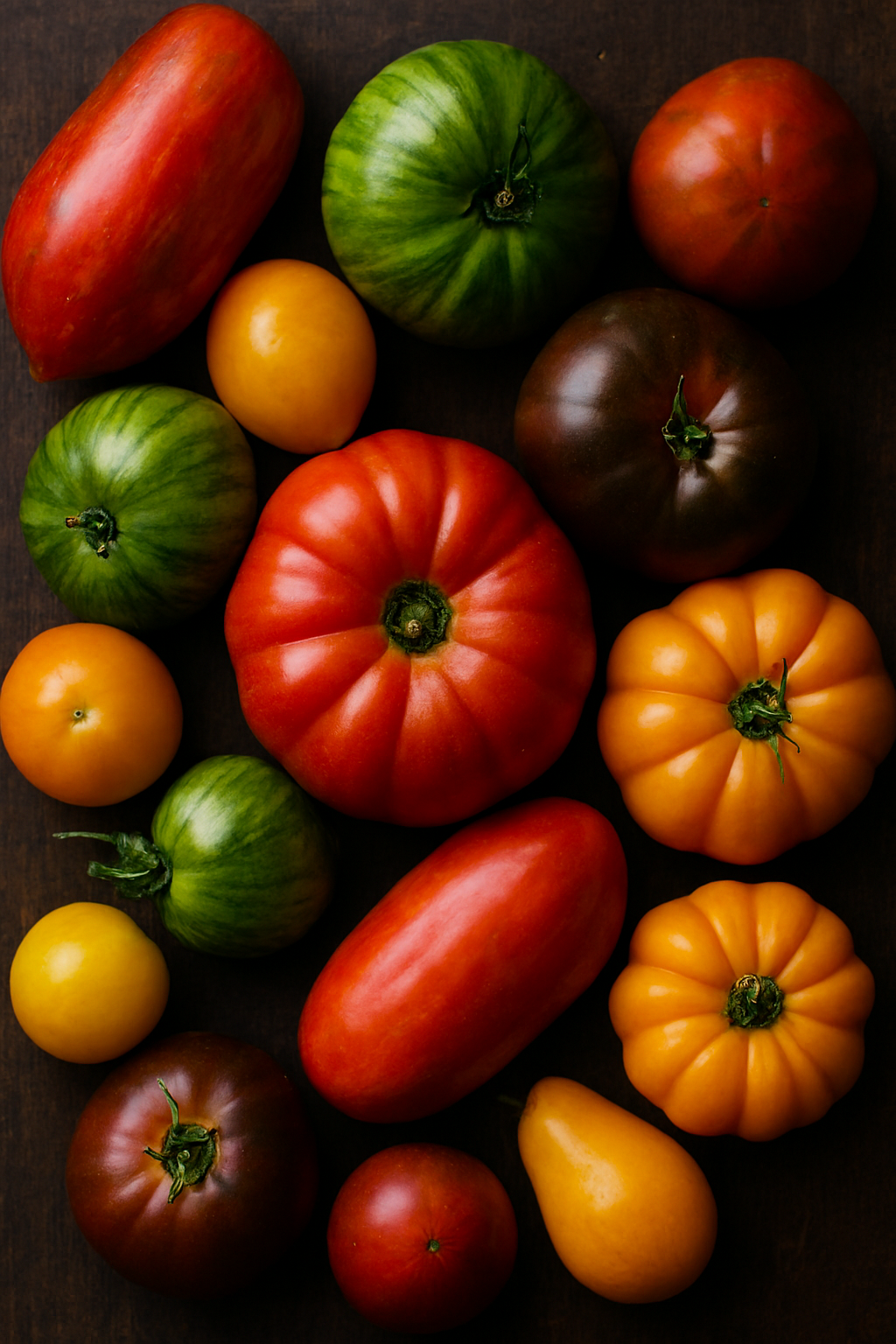
• Brandywine: Large, pink-red, ribbed; sweet and juicy.
• Cherokee Purple: Dusky purple, round; smoky and earthy.
• Green Zebra: Striped green, small; tart and citrusy.
• Black Krim: Dark red-purple, flat; salty and bold.
• Yellow Pear: Small, yellow, pear-shaped; mild and sweet.
• Mortgage Lifter: Beefy, pink-red; meaty and low-acid.
• Hillbilly Flame: Orange with red streaks; fruity and low-acid.
These tomatoes are not just ingredients—they’re expressions of biodiversity and cultural heritage.
Why Choose Heirloom Tomatoes?
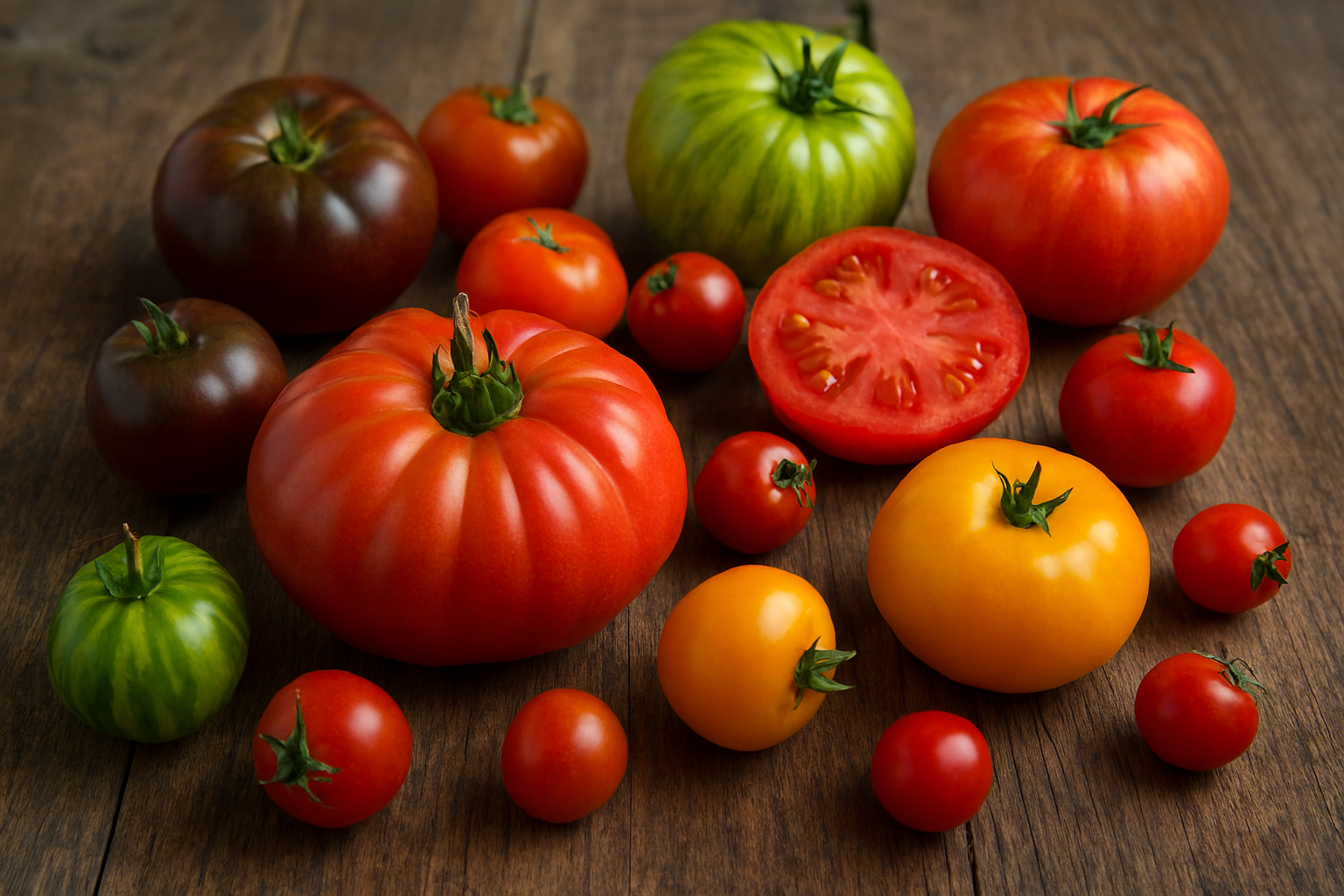
Choosing heirloom tomatoes is a vote for flavor, sustainability, and agricultural diversity. Here’s why they deserve a place in your kitchen:
• Flavor first: Heirlooms are bred for taste, not transport. Their depth of flavor can elevate even the simplest dish.
• Visual storytelling: Their vibrant colors and irregular shapes make them ideal for styled photography, plating, and visual tutorials.
• Preserving biodiversity: Growing and consuming heirlooms helps protect rare varieties from extinction.
• Seasonal connection: Heirlooms are typically available in late summer, encouraging seasonal eating and local sourcing.
• Cultural preservation: Many heirloom varieties are tied to specific regions, families, or farming traditions.
• Gardening joy: Growing heirlooms connects you to the rhythms of nature and the legacy of seed-saving.
Selecting and Storing Heirloom Tomatoes
When selecting heirloom tomatoes:
• Look for vibrant color and slight softness—ripe heirlooms should yield gently to pressure.
• Avoid deep cracks or mold—minor blemishes are normal, but deep fissures can lead to spoilage.
• Smell the stem end—a fragrant aroma indicates ripeness.
• Choose a mix of colors and shapes to create visually stunning dishes.
Storage tips for Heirloom Tomatoes

• To store tomatoes, keep them at room temperature, away from direct sunlight.
• Avoid refrigeration unless they’re overripe—cold dulls their flavor and texture.
• Use within 2–3 days for peak freshness.
• If you must refrigerate, let them come to room temperature before serving to revive some flavor.
Preparing Heirloom Tomatoes
Heirloom tomatoes are best showcased in recipes that highlight their natural flavor and beauty. Here are some standout preparations—from rustic to refined—that celebrate their essence.
1. Burrata Caprese with Basil Oil
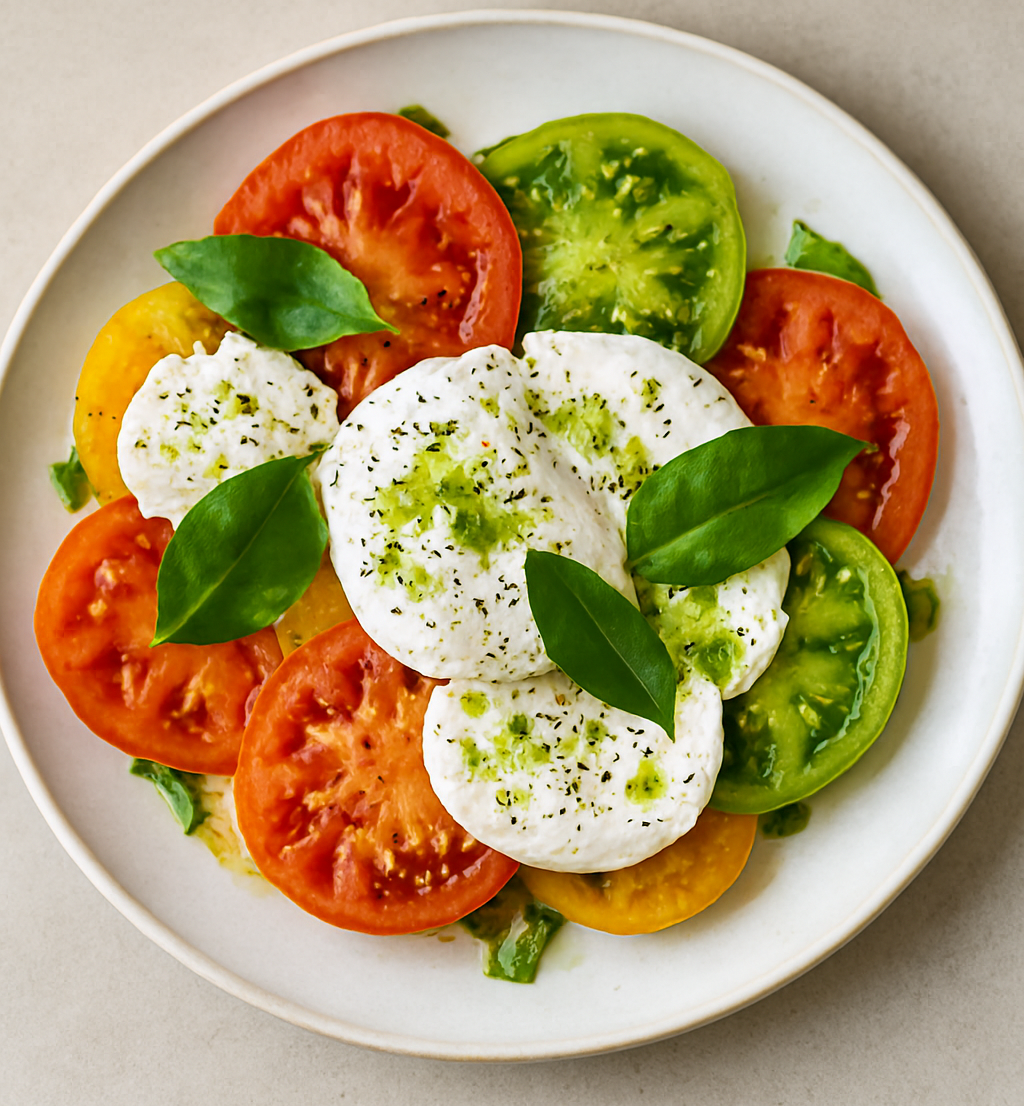
A twist on the classic Caprese, this dish pairs heirloom slices with creamy burrata and a drizzle of basil-infused oil.
Ingredients:
• Assorted heirloom tomatoes (Brandywine, Green Zebra, Yellow Pear)
• Burrata cheese
• Fresh basil
• Olive oil
• Sea salt and cracked pepper
Preparation:
• Slice tomatoes and arrange on a platter.
• Tear burrata over the top.
• Blend basil and olive oil for a vibrant drizzle.
• Finish with salt and pepper.
Use contrasting colors—green and red tomatoes with white burrata—for visual impact.
Add toasted pine nuts or microgreens for texture and flair.
2. Heirloom Tomato Galette with Goat Cheese
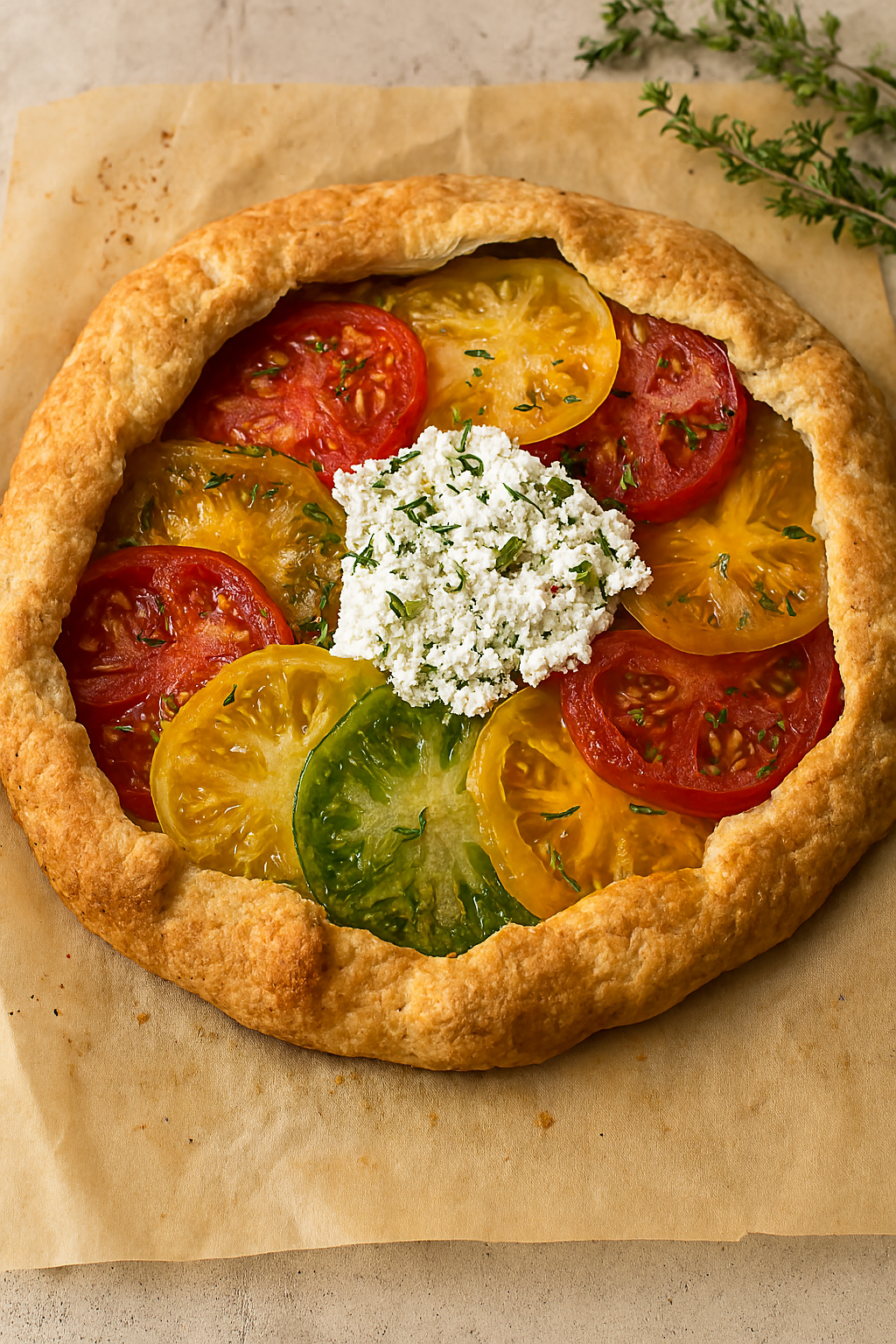
This rustic tart is perfect for brunch or a light dinner. The flaky crust cradles a medley of heirloom slices and creamy goat cheese.
Ingredients:
• Pie crust or puff pastry
• Heirloom tomatoes (Black Krim, Yellow Pear)
• Goat cheese
• Thyme or oregano
• Olive oil
Preparation:
• Roll out dough and spread goat cheese in the center.
• Layer tomato slices and sprinkle herbs.
• Fold edges over the filling.
• Bake until golden and bubbling.
Add caramelized onions or roasted garlic for depth.
Brush the crust with egg wash and sprinkle with sesame seeds for a golden finish.
3. Chilled Heirloom Tomato Gazpacho
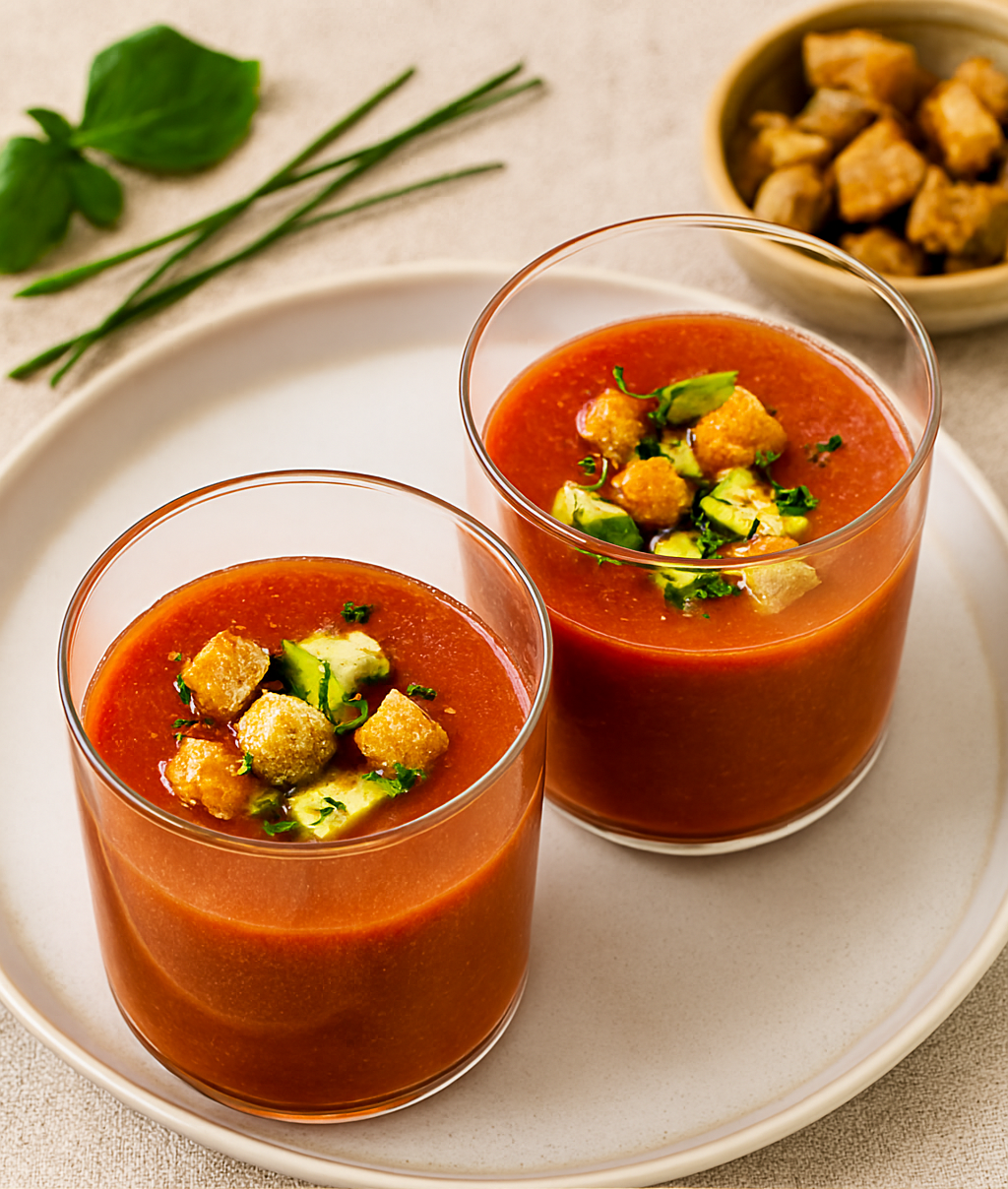
A refreshing summer soup that blends heirlooms with cucumber, bell pepper, and garlic.
Ingredients:
• Heirloom tomatoes (Green Zebra, Cherokee Purple)
• Cucumber
• Red bell pepper
• Garlic
• Olive oil
• Red wine vinegar
Preparation:
• Blend all ingredients until smooth.
• Chill for 2–3 hours.
• Serve with croutons or avocado slices.
Pour into shot glasses for a party-friendly appetizer.
Add a splash of sherry vinegar or a pinch of smoked paprika.
4. Heirloom Tomato Tart with Mustard and Gruyère
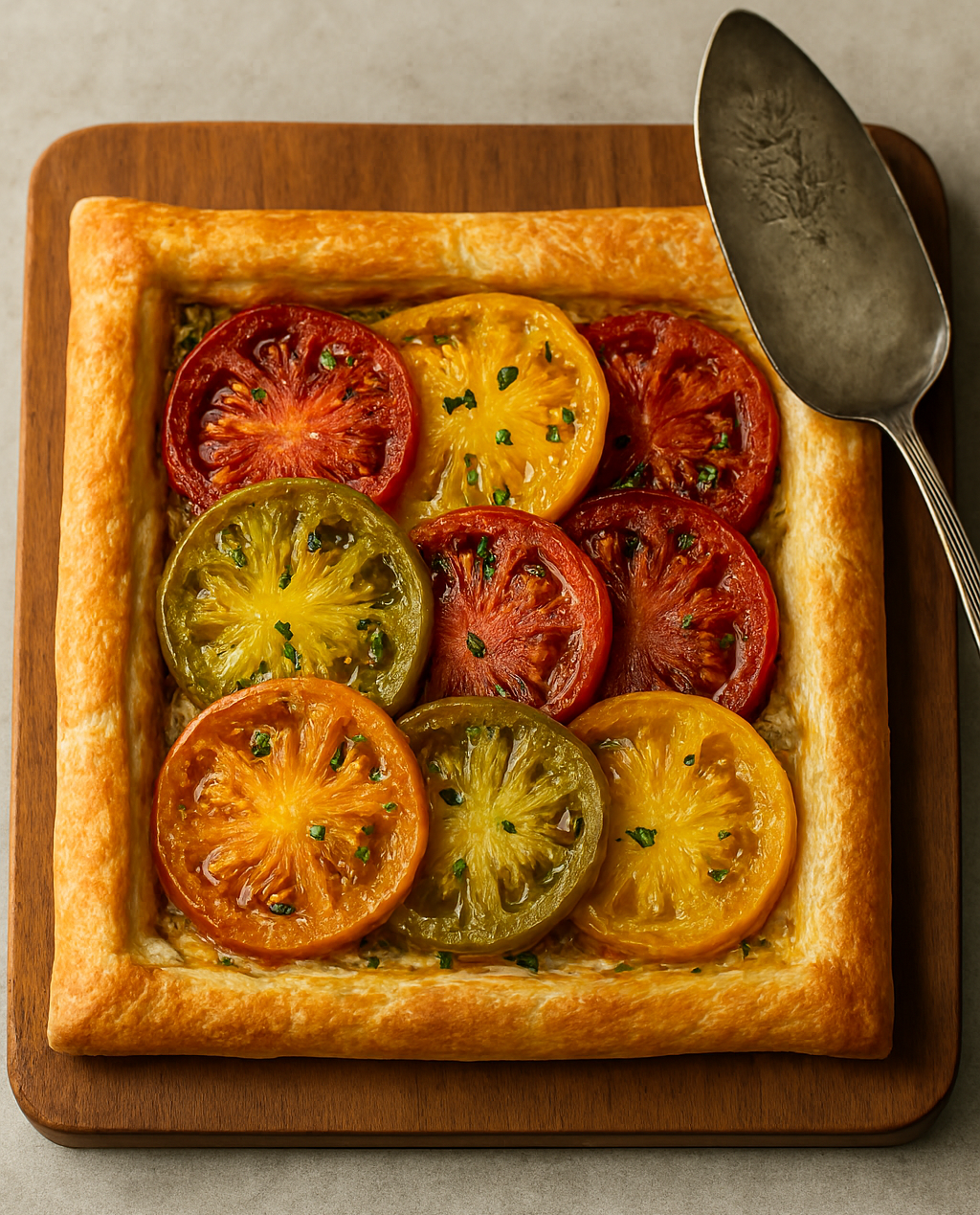
Inspired by French cuisine, this tart layers heirloom slices over a mustard-spread pastry base, topped with Gruyère.
Ingredients:
• Puff pastry
• Dijon mustard
• Gruyère cheese
• Heirloom tomatoes (Brandywine, Green Zebra)
• Thyme
Preparation:
• Spread mustard on pastry.
• Add cheese and tomato slices.
• Sprinkle thyme and bake until crisp and golden.
The mustard adds a sharp contrast to the sweet tomatoes.
Slice into squares and serve with a green salad for a light lunch.
5. Heirloom Tomato Bruschetta
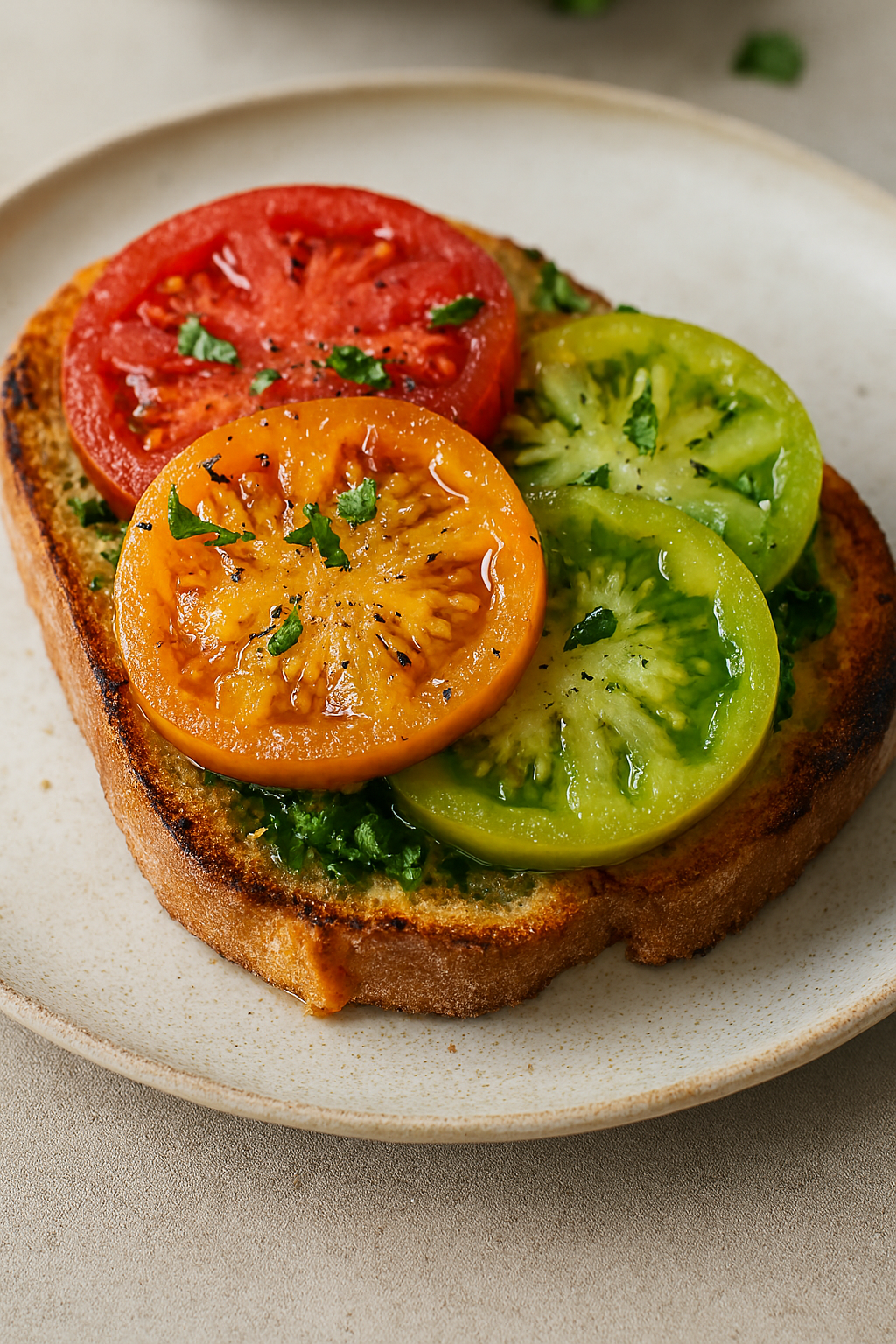
A classic appetizer that lets tomatoes shine. Toasted bread topped with chopped heirlooms, garlic, basil, and olive oil.
Ingredients:
• Baguette slices
• Heirloom tomatoes (Yellow Pear, Black Krim)
• Garlic
• Basil
• Olive oil
Preparation:
• Toast bread and rub with garlic.
• Spoon tomato mixture on top.
• Garnish with basil.
Add balsamic glaze or crumbled feta for extra punch.
Serve on a wooden board with olives and marinated artichokes.
Preserving and Pairing
Heirlooms aren’t just for fresh eating. Here are some creative ways to preserve and pair them.
Tomato Jam

• Cook tomatoes down with sugar, vinegar, and spices.
• Use as a spread for cheese boards or grilled meats.
• Flavor profile: sweet, tangy, and spiced.
• Add chili flakes or ginger for a kick.
Roasted Heirloom Tomato Sauce

• To make sauce, roast tomatoes with garlic and herbs.
• Blend into a rich pasta sauce or pizza base.
• Use a mix of varieties for layered flavor.
• Freeze in portions for winter use.
Pickled Heirloom Tomatoes
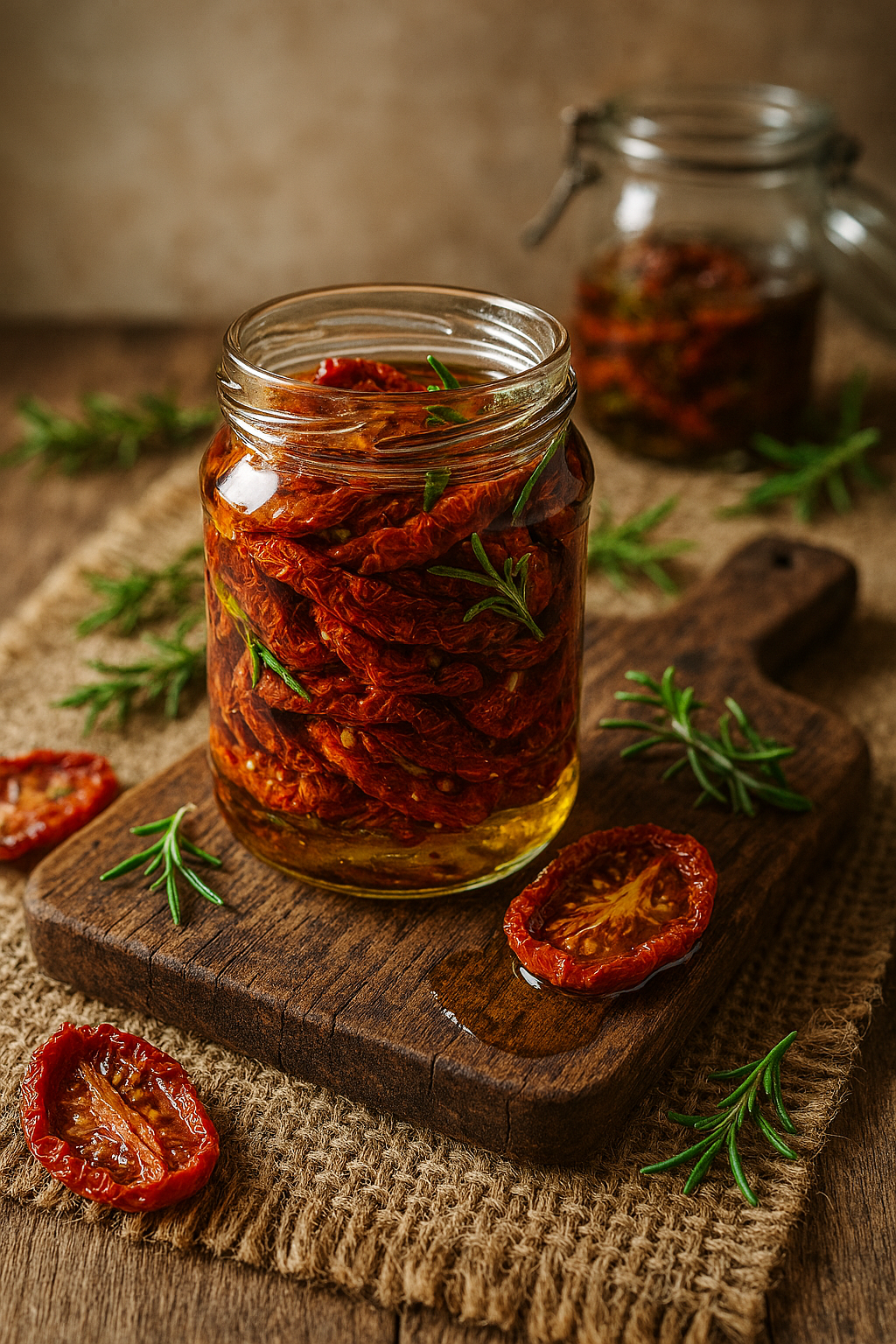
• Use small varieties like Yellow Pear or Green Zebra.
• Pickling preserves brightness and adds tang.
• Serve with sandwiches, salads, or charcuterie boards.
• Add mustard seeds and dill for extra flavor.
Pairing Heirloom Tomatoes with Other Ingredients
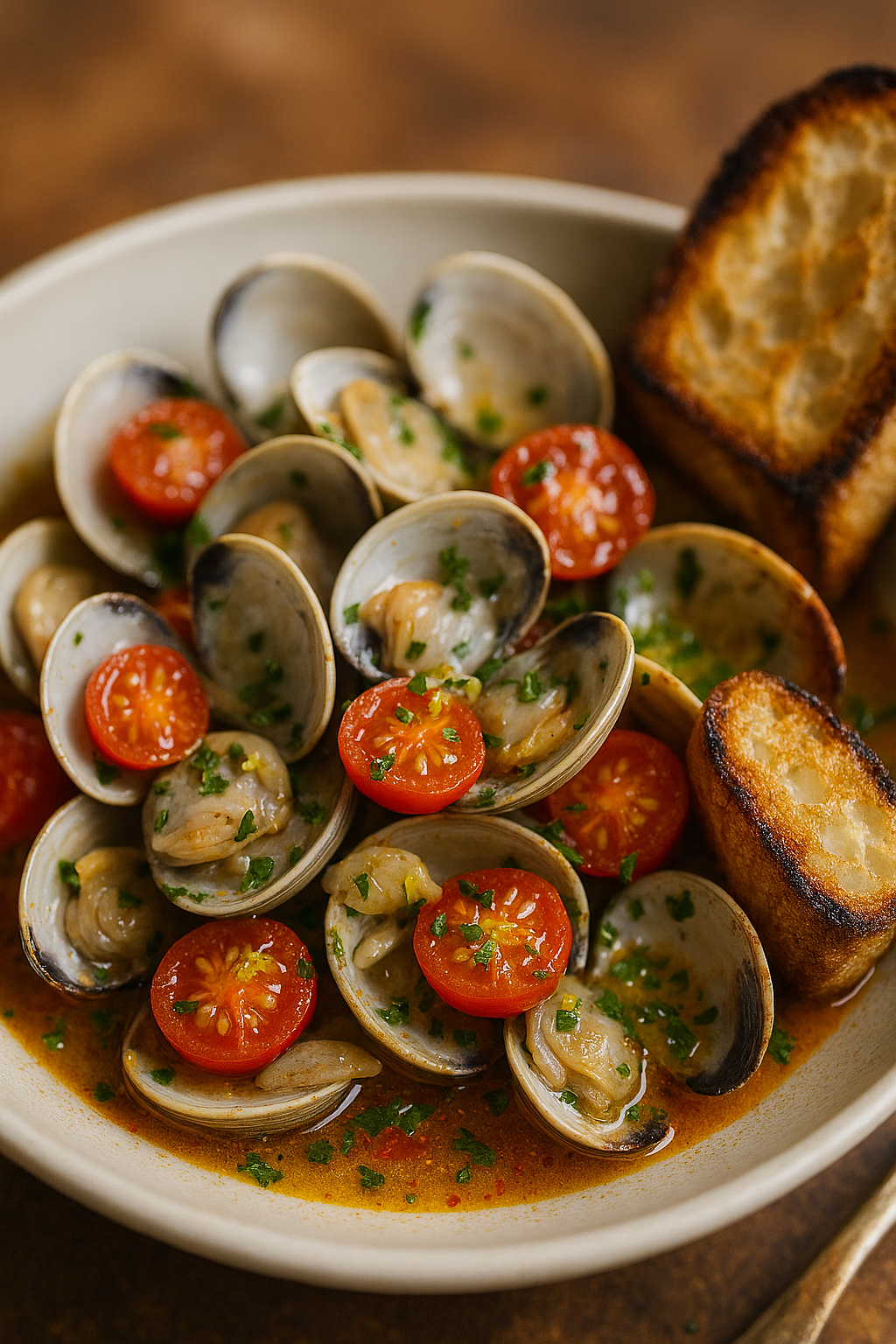
Heirlooms pair beautifully with a wide range of ingredients. Here’s a quick guide:
Cheeses:
• Burrata
• Mozzarella
• Goat cheese
• Feta
Herbs:
• Basil
• Thyme
• Oregano
• Chives
Proteins:
• Grilled chicken
• Shrimp
• Prosciutto
Grains:
• Farro
• Couscous
• Quinoa
Breads:
• Sourdough
• Focaccia
• Baguette
Acids:
• Balsamic vinegar
• Lemon juice
Their acidity balances rich, creamy, or salty components, making them versatile in both raw and cooked dishes.
Growing Heirloom Tomatoes at Home
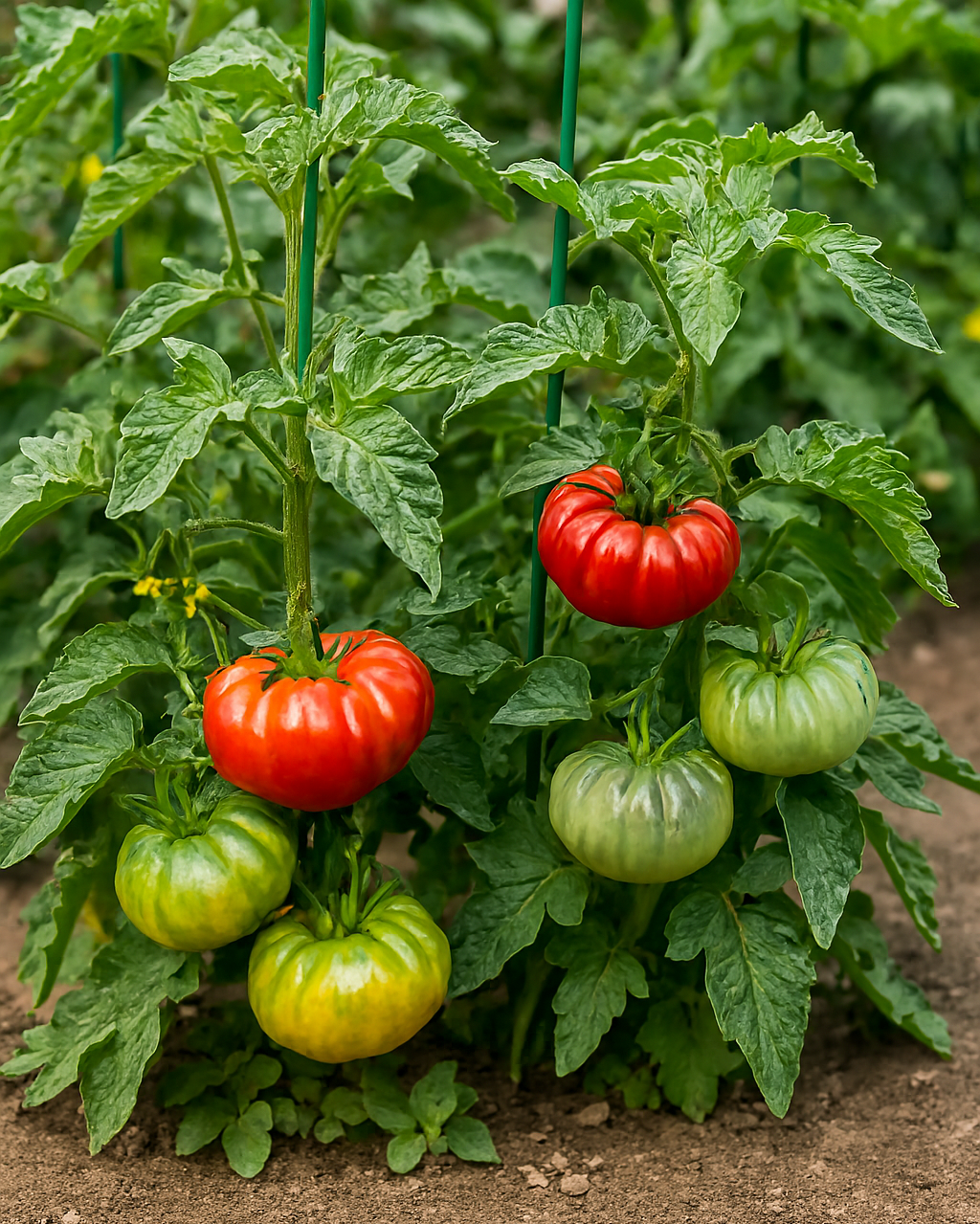
If you’re inspired to grow your own, heirlooms thrive in warm climates with full sun and well-drained soil. Choose varieties suited to your region, and start seeds indoors before transplanting.
Growing Tips:
• Stake or cage plants—they can grow tall and need support.
• Water consistently—avoid overhead watering to prevent disease.
• Rotate crops—change planting spots yearly to prevent soil-borne issues.
• Mulch—retains moisture and suppresses weeds.
• Use compost or organic fertilizer to enrich the soil.
• Watch for pests like aphids and hornworms—handpick or use neem oil if needed.
Harvesting:
• Pick when fully ripe—color is vibrant, and the tomato yields slightly to touch.
• Handle gently to avoid bruising.
• Store in a single layer to prevent crushing.
Seed saving:
• Scoop seeds from the best tomatoes.
• Ferment in water for a few days to remove gel coating.
• Dry thoroughly and store in a cool, dark place.
Growing heirlooms connects you to the rhythms of nature and the legacy of seed-saving. It’s a rewarding experience that yields not just fruit, but stories.
Styling and Presentation with Heirlooms
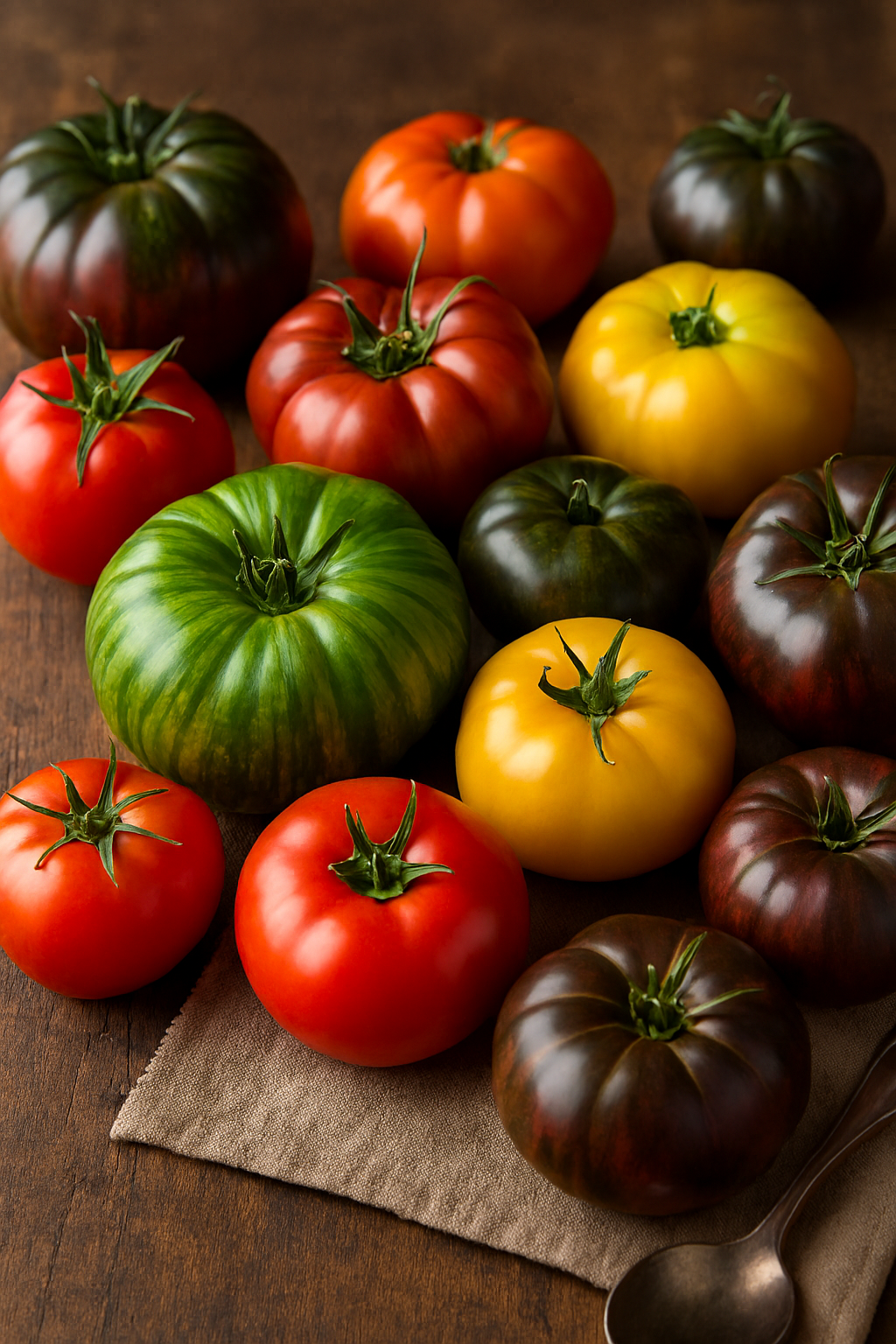
For content creators and food stylists, heirloom tomatoes offer endless visual possibilities. Their irregular shapes and vivid colors make them ideal for:
• Flat lays with color gradients or shape contrasts.
• Overhead shots with rustic props—wooden boards, linen napkins, vintage knives.
• Close-ups that highlight their juicy texture and seed patterns.
• Layered dishes like tarts or salads that showcase their variety.
• Sliced arrangements on dark backgrounds for dramatic contrast.
• Pairing with edible flowers or herbs for a garden-to-table aesthetic.
Use natural light and minimal editing to let their natural beauty shine. Their imperfections are part of their charm—lean into the organic feel.
Wrapping Up
Heirloom tomatoes are more than just a seasonal treat—they’re a celebration of flavor, history, and biodiversity. Each tomato tells a story, not just of the soil it grew in, but of the people who preserved its seeds, the cultures that nurtured its lineage, and the meals that brought it to life.
Cooking with heirlooms invites us to slow down and savor. Their fleeting season reminds us to appreciate what’s fresh, local, and real. Whether you’re layering them into a tart, blending them into gazpacho, or simply slicing them with sea salt and olive oil, heirlooms reward simplicity and creativity alike.
So next time you spot a basket of heirloom tomatoes—striped, speckled, or sun-kissed—don’t hesitate. Pick the ones that speak to you. Let them inspire your next dish, your next photo, your next story. Because in every heirloom tomato, there’s a legacy worth tasting.
Leave a Reply